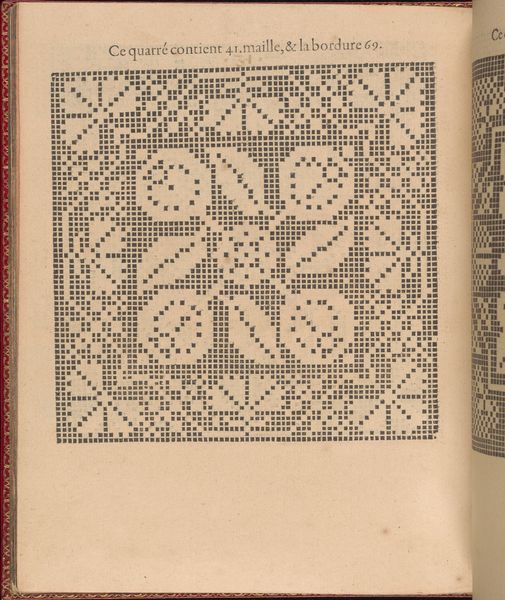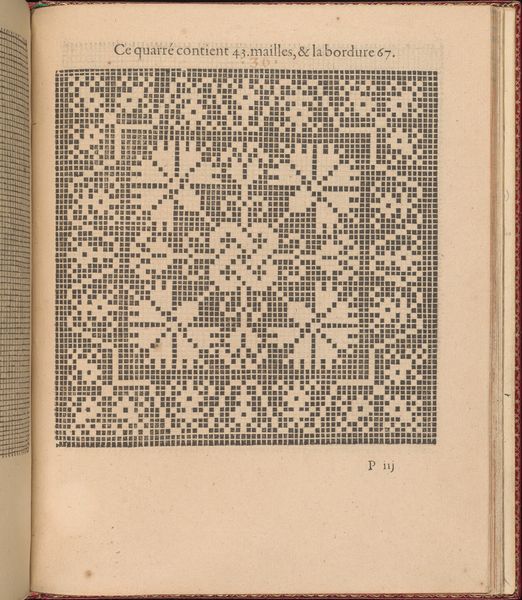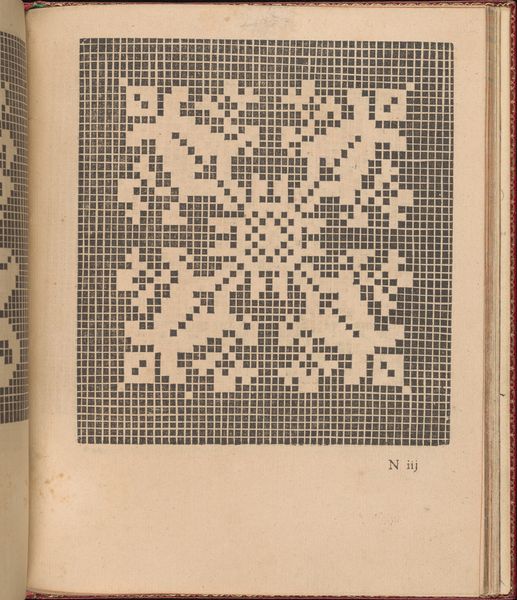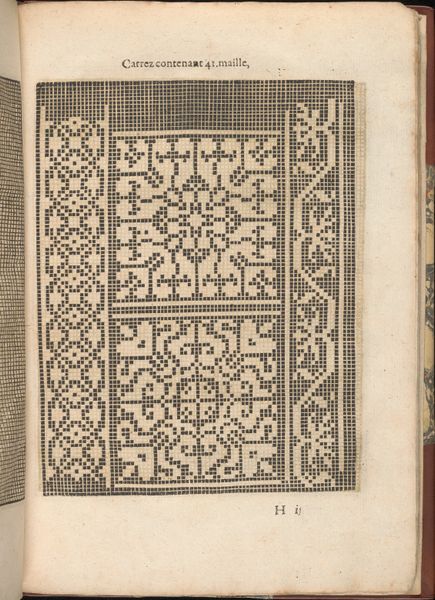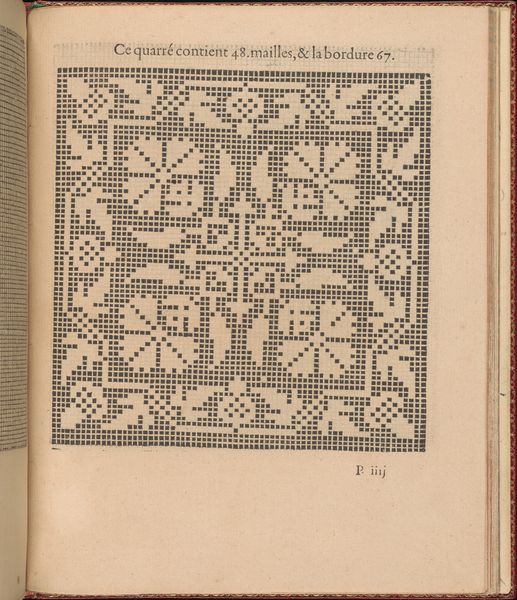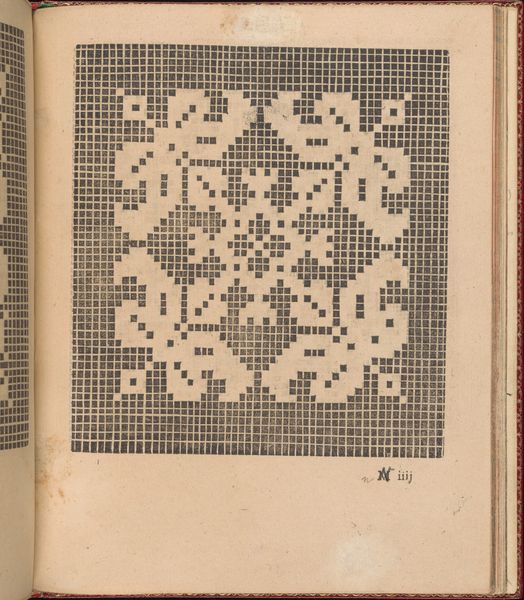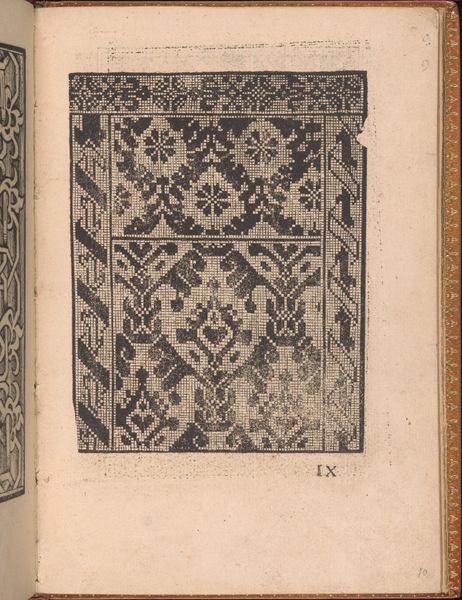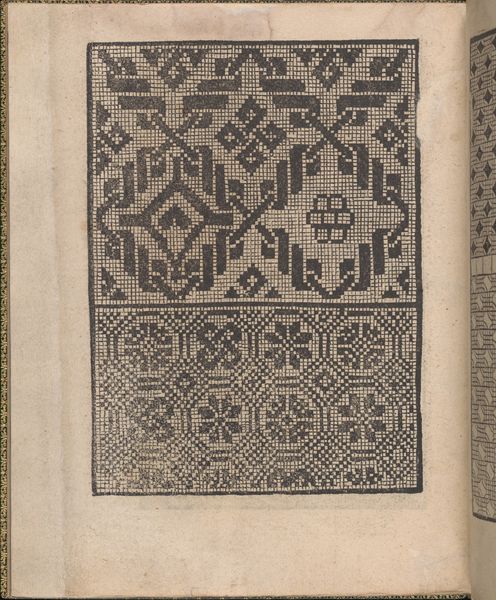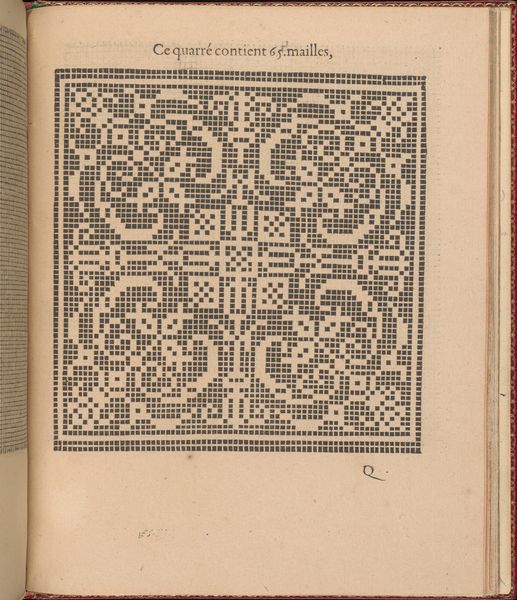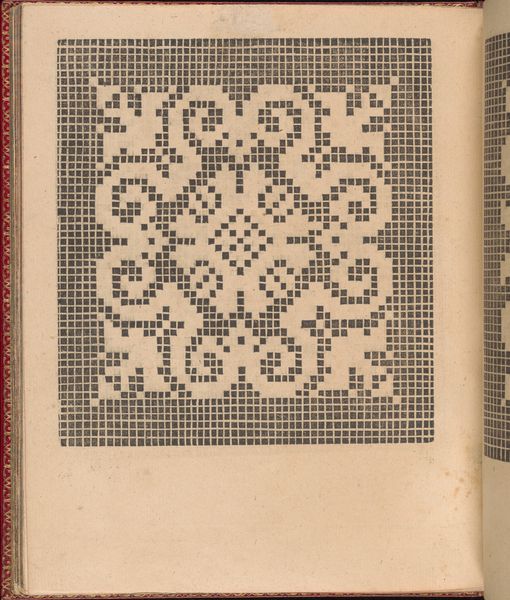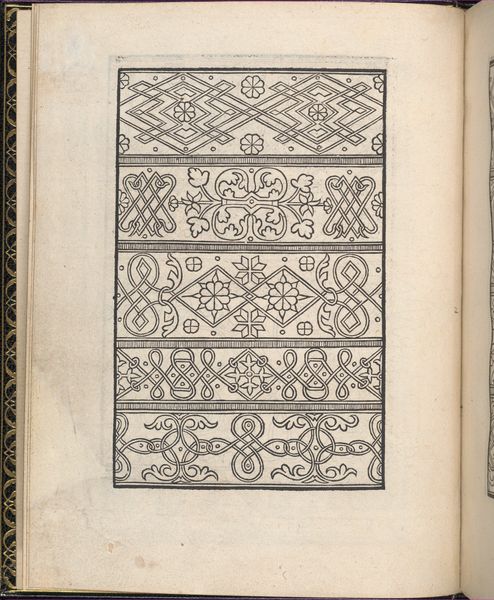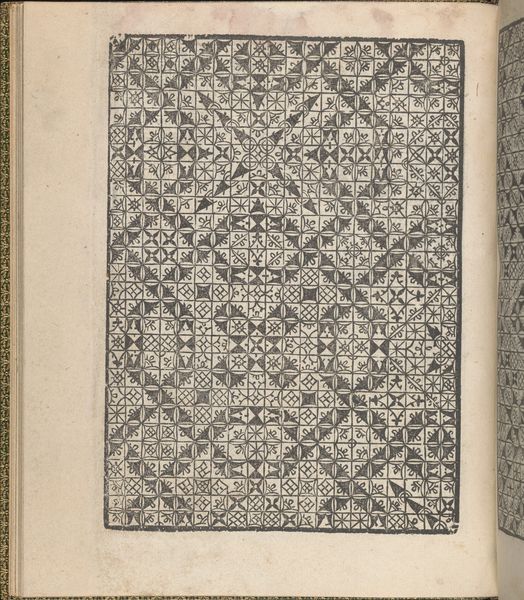
Les Singuliers et Nouveaux Portraicts... page 57 (recto) 1588
0:00
0:00
drawing, print, paper, engraving
#
drawing
# print
#
paper
#
11_renaissance
#
geometric
#
history-painting
#
engraving
Dimensions: Overall: 8 1/16 x 6 5/16 in. (20.5 x 16 cm)
Copyright: Public Domain
Editor: So, here we have a page from "Les Singuliers et Nouveaux Portraicts...", created in 1588 by Federico de Vinciolo. It's a print, an engraving on paper, with an intricate geometric design. It reminds me of a cross-stitch pattern, very meticulous and precise. How do you see it? Curator: Well, immediately I consider the socio-cultural implications. This isn't just a pretty pattern; it's a glimpse into 16th-century domestic life. Pattern books like these weren’t fine art, but rather tools for women – and sometimes men – involved in textile production. It’s fascinating to think about how these images were disseminated, used, and perhaps even subverted in different social contexts. Were they simply copied, or were they reinterpreted and adapted? Editor: That's an interesting perspective. I was so focused on the visual, the repetition, the balance. I didn’t consider its use. How accessible would this book have been? Curator: That’s key! Access was highly dependent on social status and literacy, though even the illiterate could learn from copying the designs. The existence of pattern books speaks to the burgeoning print culture and its influence on daily life. This was a period of rapid dissemination of ideas. So how did these patterns help standardize visual tastes, and did they also permit regional or individual expression? Editor: So, in a way, this engraving, though seemingly simple, participates in larger cultural conversations about gender roles, class, and the spread of information. I hadn't considered it as part of that network. Curator: Exactly. It is a matrix within a bigger matrix. And it speaks volumes about the public role of art and the politics embedded within seemingly innocuous imagery. It highlights how museums and galleries present these things and which social and cultural narratives end up gaining prominence. Editor: That makes me look at the image with new eyes, recognizing its historical and social context so that what first seemed decorative actually provides fascinating insight into the lives of people centuries ago. Curator: I agree. This image speaks to art’s critical public role of sparking complex dialogues.
Comments
No comments
Be the first to comment and join the conversation on the ultimate creative platform.
